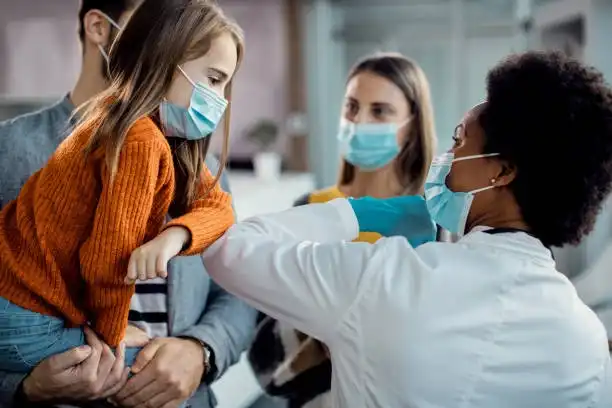First-degree burns affect the top layer of the skin and are the most minimal type of burn. They cause minor redness, pain and swelling and can often heal on their own at home.
Home Treatment for Second-Degree Burns
For many second-degree burns , home treatment is all that is needed for healing and to prevent other problems.
Rinse the burn
- Rinse burned skin with cool water until the pain stops. Rinsing will usually stop the pain in 15 to 30 minutes. The cool water lowers the skin temperature and stops the burn from becoming more serious. You may:
- Place arms, hands, fingers, legs, feet, or toes in a basin of cool water.
- Apply cool compresses to burns on the face or body.
Clean the burn
- Wash your hands before cleaning a burn. Do not touch the burn with your hands or anything dirty, because open blisters can easily be infected.
- Do not break the blisters. .
- Gently wash the burn area with clean water. Some of the burned skin might come off with washing. Pat the area dry with a clean cloth or gauze.
- Do not put sprays or butter on burns, because this traps the heat inside the burn.
Bandaging the burn
- If the burned skin or blisters have not broken open, a bandage may not be needed. If the burned skin or unbroken blisters are likely to become dirty or be irritated by clothing, apply a bandage.
- If the burned skin or blisters have broken open, a bandage is needed. To further help prevent infection, apply a clean bandage whenever your bandage gets wet or soiled. If a bandage is stuck to a burn, soak it in warm water to make the bandage easier to remove. If available, use a nonstick dressing. There are many bandage products available. Be sure to read the product label for correct use.
- Wrap the burn loosely to avoid putting pressure on the burned skin.
- Do not tape a bandage so that it circles a hand, arm, or leg. This can cause swelling.
There are many nonprescription burn dressings available. Be sure to follow the instructions included in the package.
If the burn is on a leg or an arm, keep the limb raised as much as possible for the first 24 to 48 hours to decrease swelling. Move a burned leg or arm normally to keep the burned skin from healing too tightly, which can limit movement.
Related Information
Credits
Current as of: August 2, 2022
Author: Healthwise Staff
Medical Review:
William H. Blahd Jr. MD, FACEP – Emergency Medicine
Adam Husney MD – Family Medicine
Kathleen Romito MD – Family Medicine
H. Michael O’Connor MD – Emergency Medicine
Martin J. Gabica MD – Family Medicine- Top of the page
- Next Section: Related Information
- Previous Section: Overview
- Top of the page
- Next Section: Credits
- Previous Section: Related Information
- Top of the page
Current as of: August 2, 2022
Medical Review: William H. Blahd Jr. MD, FACEP – Emergency Medicine & Adam Husney MD – Family Medicine & Kathleen Romito MD – Family Medicine & H. Michael O’Connor MD – Emergency Medicine & Martin J. Gabica MD – Family Medicine
Topic Contents
Current as of: August 2, 2022
Medical Review: William H. Blahd Jr. MD, FACEP – Emergency Medicine & Adam Husney MD – Family Medicine & Kathleen Romito MD – Family Medicine & H. Michael O’Connor MD – Emergency Medicine & Martin J. Gabica MD – Family Medicine
This information does not replace the advice of a doctor. Healthwise, Incorporated disclaims any warranty or liability for your use of this information. Your use of this information means that you agree to the Terms of Use and Privacy Policy . Learn how we develop our content .
To learn more about Healthwise, visit Healthwise.org .
© 1995-2022 Healthwise, Incorporated. Healthwise, Healthwise for every health decision, and the Healthwise logo are trademarks of Healthwise, Incorporated.
The Health Encyclopedia contains general health information. Not all treatments or services described are covered benefits for Kaiser Permanente members or offered as services by Kaiser Permanente. For a list of covered benefits, please refer to your Evidence of Coverage or Summary Plan Description. For recommended treatments, please consult with your health care provider.
SHARE THIS ARTICLE
- Get Care
- Find Doctors & Locations
- Health Classes
- Care When Traveling
- Timely Access to Care
Our organization
- About KP
- Patient Quality & Safety
- News
- Commitment to the Community
- Equity, Inclusion, & Diversity
- Annual Report
- Careers
- For the Media
Member support
- New Member Welcome
- Forms & Publications
- Support Center
- Medical Information Requests
- Request for confidential communications forms
Visit our other sites
- Individual & Family Plans
- Medicaid/Medi-Cal
- Medicare
- Affordable Care Act
- For Businesses
- For Federal Employees
- Broker Support
- Accessibility
- Nondiscrimination Notice
- Website Privacy
- HIPAA Notice of Privacy Practices
- Terms & Conditions
- Rights & Responsibilities
- Disaster Planning
- Technical Information
- Site Map
- Contact Site Manager
- HIPAA Authorization
- Accessibility
- Nondiscrimination Notice
- Website Privacy
- HIPAA Notice of Privacy Practices
- Terms & Conditions
- Rights & Responsibilities
- Disaster Planning
- Technical Information
- Site Map
- Contact Site Manager
- HIPAA Authorization
Follow us on these external social media sites that will open in a new browser window.
Kaiser Permanente health plans around the country: Kaiser Foundation Health Plan, Inc., in Northern and Southern California and Hawaii • Kaiser Foundation Health Plan of Colorado • Kaiser Foundation Health Plan of Georgia, Inc., Nine Piedmont Center, 3495 Piedmont Road NE, Atlanta, GA 30305, 404-364-7000 • Kaiser Foundation Health Plan of the Mid-Atlantic States, Inc., in Maryland, Virginia, and Washington, D.C., 2101 E. Jefferson St., Rockville, MD 20852 • Kaiser Foundation Health Plan of the Northwest, 500 NE Multnomah St., Suite 100, Portland, OR 97232 • Kaiser Foundation Health Plan of Washington or Kaiser Foundation Health Plan of Washington Options, Inc., 1300 SW 27th St., Renton, WA 98057
Selecting these links will take you away from KP.org. Kaiser Permanente is not responsible for the content or policies of external websites. Details
Adobe Acrobat is required to read PDFs.
How to Treat a Second-Degree Burn

According to the American Burn Association (ABA), nearly 450,000 people a year experience burns that require medical treatment. Although the level, or degree, of a burn can range from person to person based on how the burn occurred, there are various symptoms to be mindful of after getting burned.
The most common cause of burns is direct contact with a fire or flame. Other burns occur due to exposure to various heat sources like scalding water, hot grease from a pan, steam, and, in some cases, even too much direct exposure to the sun, especially in the warmer months.
Second-degree burns are the most common type of burn each year and may require medical treatment based on the symptoms you experience and the size of the affected area.
What is a second-degree burn?
A second-degree burn affects the epidermis and dermis, the top two layers of your skin. It is often referred to as a partial thickness burn. It is most notably characterized by a moist or wet look on the surface of the affected area. Blisters are also common signs of this type of burn.
What are the signs and symptoms of a second-degree burn?
Although wet, shiny, and blistered skin is the most common indicator of a second-degree burn, there are other symptoms to be on the lookout for.
Symptoms of second-degree burns include:
- Deep redness on the affected area and adjacent skin
- Skin that is painful to the touch after exposure to heat, chemicals or flames
- An irregular pattern of white or discolored skin on the affected area
- Swelling
In some instances, deep second-degree burns may cause scarring.
How do I treat a second-degree burn?
Treatment for a second-degree burn is based mainly on the severity of symptoms experienced.
Although some second-degree burns can be treated at home, most require a visit to a medical professional for further evaluation and comprehensive treatment.
The most common ways to treat a second-degree burn that doesn’t cover more than 10% of your body may include:
- Running cool water over the affected area for 20 minutes
- Washing the affected area with mild soap and water
- Applying a cool compress or wet cloth over the burn area in 5 to 15-minute intervals to relieve pain and reduce swelling
- Using a topical over-the-counter antibiotic ointment like Bacitracin or Neosporin to the burn
- Taking an over-the-counter pain reliever
- Dressing changes one or two times a day depending on the severity of the burn
- Daily cleaning of the wound to remove dead skin or ointment
In some cases, doctors may prescribe a topical or oral antibiotic to promote healing.
Typically, superficial second-degree burns heal entirely within 3 weeks. In some instances, healing may take longer.
What are the other types of burns?
First-degree burns affect the top layer of the skin and are the most minimal type of burn. They cause minor redness, pain and swelling and can often heal on their own at home.
Third-degree burns are the most severe type of burn affecting all three layers of the skin. They can penetrate so deeply that they sometimes affect underlying nerves, tissue, muscles and bones. If you suspect that you are experiencing a third-degree burn, call 9-1-1 immediately.
When to visit Amory Urgent Care
If symptoms do not improve, or if they worsen as the days progress, you should visit Amory Urgent Care today, especially if you believe the burn is infected.
It is critical to be seen if you experience:
- A fever
- Any change in color of the burnt area or the surrounding skin
- Persistent swelling
- Purplish discoloration
- Increased thickness of the burn
- Green discharge or pus
Seek emergency medical care immediately for:
- Burns that cover the hands, feet, face, groin, buttocks, a major joint, or a large area of the body
- Burns that cause the skin to look leathery
- Burns that appear charred or have patches of black or brown
- Burns caused by chemicals or electricity
- Difficulty breathing or burns to the airway
Visit Amory Urgent Care to get the treatment you need for your second-degree burn today. We welcome walk-in appointments seven days a week to help you feel better sooner.
CONTACT US
Still have questions?
Call us at 662-256-5612OR JUST WALK IN!
Amory Urgent Care
906 Hwy 278,
Amory, MS 38821






